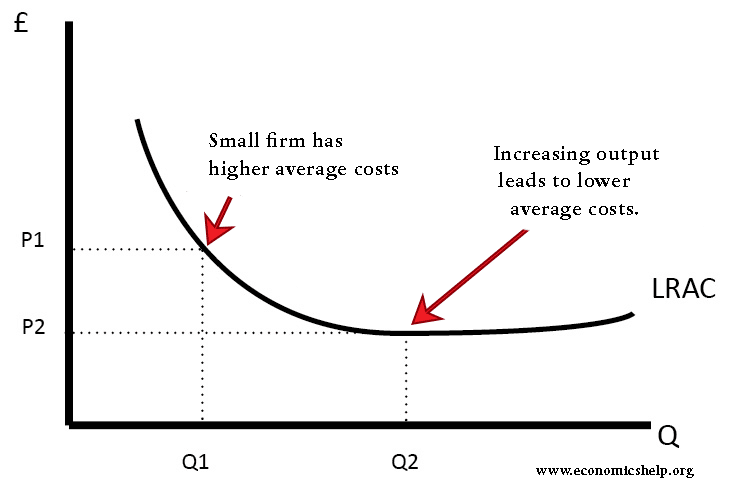Readers Question: Explain with the help of diagrams the equilibrium of a firm having monopoly power in the market in the short-run and long-run?
The diagram for a monopoly is generally considered to be the same in the short run as well as the long run.
- Profit maximisation occurs where MR=MC. Therefore the equilibrium is at Qm, Pm. (point M)
- This diagram shows how a monopoly is able to make supernormal profits because the price (AR) is greater than AC.
- Usually, supernormal profit attracts new firms to enter the market, but there are barriers to entry in monopoly, and this enables the monopoly to keep supernormal profits.
Difference between monopoly and competitive markets in the long-run
In the short run, firms in competitive markets and monopolies could make supernormal profit.
However, there is one major difference.
- In monopolies, there are barriers to entry – which prevent new firms from entering the market
- In competitive markets barriers to entry and low – so new firms can enter the market causing lower profit.
- Therefore, in the long-run in competitive markets, prices will fall and profits will fall.
- However in the long-run in monopoly prices and profits can remain high.
Efficiency and monopoly
- Monopolies set a price greater than MC which is allocatively inefficient.
- By producing at Qm, the monopoly is productively inefficient (not lowest point on AC curve)
- With less competition, a monopoly has fewer incentives to cut costs and therefore will be x-inefficient.
Welfare loss to society
- In a competitive market, the output will be at Pc and Qc. (point C)
- In a monopoly, the output will be QM and PM – causing a fall in consumer surplus.
- Monopoly also causes a fall in producer surplus (less is sold). But, some of the consumer surplus is captured by firms (from setting higher price).
- The blue triangle shows the net loss of consumer and producer surplus to society.
Long run average costs in monopoly

It is assumed monopolies have a degree of economies of scale, which enables them to benefit from lower long-run average costs.
In a competitive market, firms may produce quantity Q2 and have average costs of AC2. A monopoly can produce more and have lower average costs. This enables efficiency of scale.
Related
- Monopolistic competition – where the short-run equilibrium is different from the long-run equilibrium
- Monopoly – advantages and disadvantages.


This is actually helpful you really helped me on my assignments